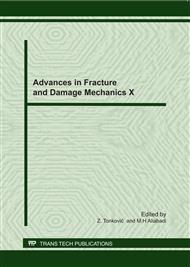p.597
p.601
p.605
p.609
p.613
p.617
p.621
p.626
p.630
Influence of the Secondary Raw Materials on the Mechanical Properties of Multilayer Films
Abstract:
Recycling and usage of secondary raw materials in production is one of the most topical issues. Usage of secondary raw materials is one of the most topical issues in both economic and ecological (environmental) sense. Such a layered film on the market has lower price because secondary raw material prices is significant lower compared with the original material, the PET granules. Currently producing a layered film the middle layer composes up to 50 % of recycled material. In today's market in order to maintain a high level of competitiveness usage of 50 % of recycled materials is inadequate, therefore to use more recycled material amount and in such way to reduce product cost further researches are necessary.
Info:
Periodical:
Pages:
613-616
Citation:
Online since:
September 2011
Keywords:
Price:
Сopyright:
© 2012 Trans Tech Publications Ltd. All Rights Reserved
Share:
Citation:


